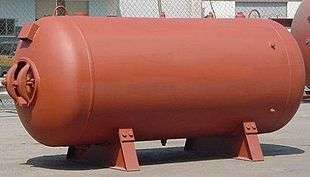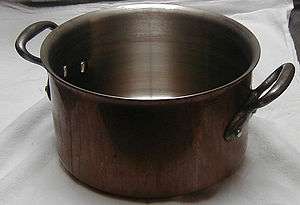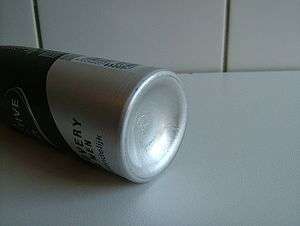Head (vessel)

A head is one of the end caps on a cylindrically shaped pressure vessel.
Principle
Vessel dished ends are mostly used in storage or pressure vessels in industry. These ends, which in upright vessels are the bottom and the top, use less space than a hemisphere (which is the ideal form for pressure containments) while requiring only a slightly thicker wall.
Manufacturing
The manufacturing of such an end is easier than that of a hemisphere. The starting material is first pressed to a radius r1 and then curled at the edge creating the second radius r2. Vessel dished ends can also be welded together from smaller pieces.
Shapes
The shape of the heads used can vary. The most common[1][2] head shapes are:
Hemispherical head
A sphere is the ideal shape for a head, because the pressure in the vessel is divided equally across the surface of the head. The radius (r) of the head equals the radius of the cylindrical part of the vessel.
Ellipsoidal head
This is also called an elliptical head. The shape of this head is more economical, because the height of the head is just a fraction of the diameter. Its radius varies between the major and minor axis; usually the ratio is 2:1.
Torispherical head
These heads have a dish with a fixed radius (r1), the size of which depends on the type of torispherical head.[3] The transition between the cylinder and the dish is called the knuckle. The knuckle has a toroidal shape. The most common types of torispherical heads are:
.png)
Klöpper head
This is a torispherical head. The dish has a radius that equals the diameter of the cylinder it is attached to (). The knuckle has a radius that equals a tenth of the diameter of the cylinder (), hence its alternative designation "decimal head".
- Also other sizes are: ,[4](page13) rest of height () .
Korbbogen head
This is a torispherical head also named Semi ellipsoidal head (According to DIN 28013). The radius of the dish is 80% of the diameter of the cylinder (). The radius of the knuckle is ().
- Also other sizes are , rest of height () . This shape[5] finds its origin in architecture; see Korbbogen, architectural information.
Flat head
This is a head consisting of a toroidal knuckle connecting to a flat plate. This type of head is typically used for the bottom of cookware.

Diffuser head

This type of head is often found on the bottom of aerosol spray cans. It is an inverted torispherical head.
Conical head
This is a cone-shaped head.
Heat treatment
Heat treatment is usually required after cold forming, but not for heads formed by hot forming.[6]
References
- ↑ Juenger.com
- ↑ Dished heads
- ↑ Torispherical head
- ↑ http://teledu.mech.teilar.gr/mod/resource/view.php?id=101
- ↑ Korbogen design standard
- ↑ ASME Section VIII Div.1 for further detail.